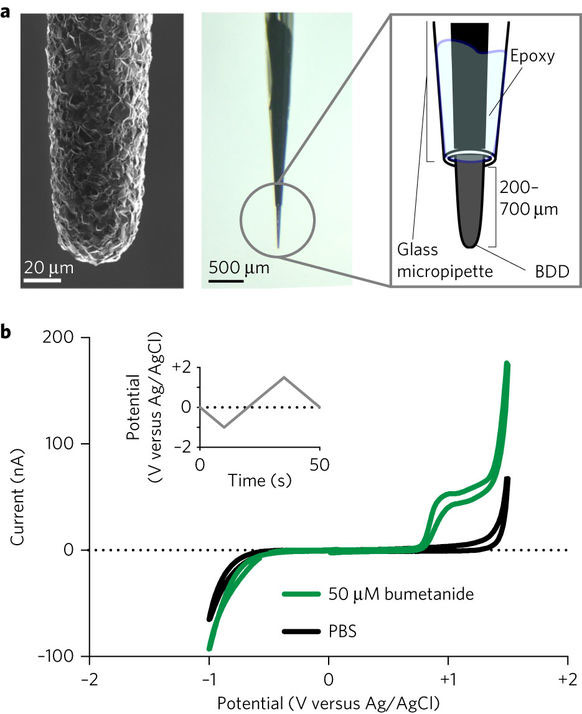薬物の局所動態をin vivoでリアルタイムに検出するためのマイクロセンシングシステム
A microsensing system for the in vivo real-time detection of local drug kinetics
2017年8月9日 Nature Biomedical Engineering 1 : 654 doi: 10.1038/s41551-017-0118-5

全身投与された薬物のin vivo微小環境での動態がリアルタイムに記録されれば、有効な医学的治療法の開発が促進されると考えられる。しかし、従来の方法は大量の検体を必要とし、サンプリングのペースが遅く、また薬物の動態が経時的に標的の機能とどのように相関するかを取り扱わない。本論文では、微小ガラス電極と、先端の直径が約40μmのホウ素ドープダイヤモンドからなる微小センサーとを組み合わせた薬物センシングシステムを開発および応用したことを示す。我々は、ブメタニド(耳毒性であるがてんかん治療に適用される利尿薬)の濃度と聴覚の基礎をなす蝸牛内電位の変化がこのシステムによって同時にリアルタイムで計測されることを、モルモット蝸牛で示した。ラット脳では、ブメタニドの動態と神経活動を表す局所電場電位とを追跡した。また、抗てんかん薬ラモトリギンおよび抗がん薬ドキソルビシンの作用がin vivoでモニターされることも示した。このマイクロセンシングシステムは、別の方法ではなお検出されないと考えられる薬理学的および生理学的反応を検出する可能性をもたらす。
Corresponding Authors
Real-time recording of the kinetics of systemically administered drugs in in vivo microenvironments may accelerate the development of effective medical therapies. However, conventional methods require considerable analyte quantities, have low sampling rates and do not address how drug kinetics correlate with target function over time. Here, we describe the development and application of a drug-sensing system consisting of a glass microelectrode and a microsensor composed of boron-doped diamond with a tip of around 40 μm in diameter. We show that, in the guinea pig cochlea, the system can measure—simultaneously and in real time—changes in the concentration of bumetanide (a diuretic that is ototoxic but applicable to epilepsy treatment) and the endocochlear potential underlying hearing. In the rat brain, we tracked the kinetics of the drug and the local field potentials representing neuronal activity. We also show that the actions of the antiepileptic drug lamotrigine and the anticancer reagent doxorubicin can be monitored in vivo. Our microsensing system offers the potential to detect pharmacological and physiological responses that might otherwise remain undetected.

